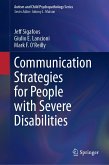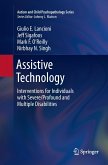
eBook, PDF
Springer International Publishing

Broschiertes Buch
Interventions for Individuals with Severe/Profound and Multiple Disabilities
2013
19. September 2014
Springer / Springer New York / Springer, Berlin
978-1-4899-9579-7
| Gebundenes Buch | 77,99 € | |
| eBook, PDF | 73,95 € |
Gebundenes Buch
Interventions for Individuals with Severe/Profound and Multiple Disabilities
2013
4. August 2012
Springer / Springer New York / Springer, Berlin
80035297,978-1-4614-4228-8
Ähnlichkeitssuche: Fact®Finder von OMIKRON
